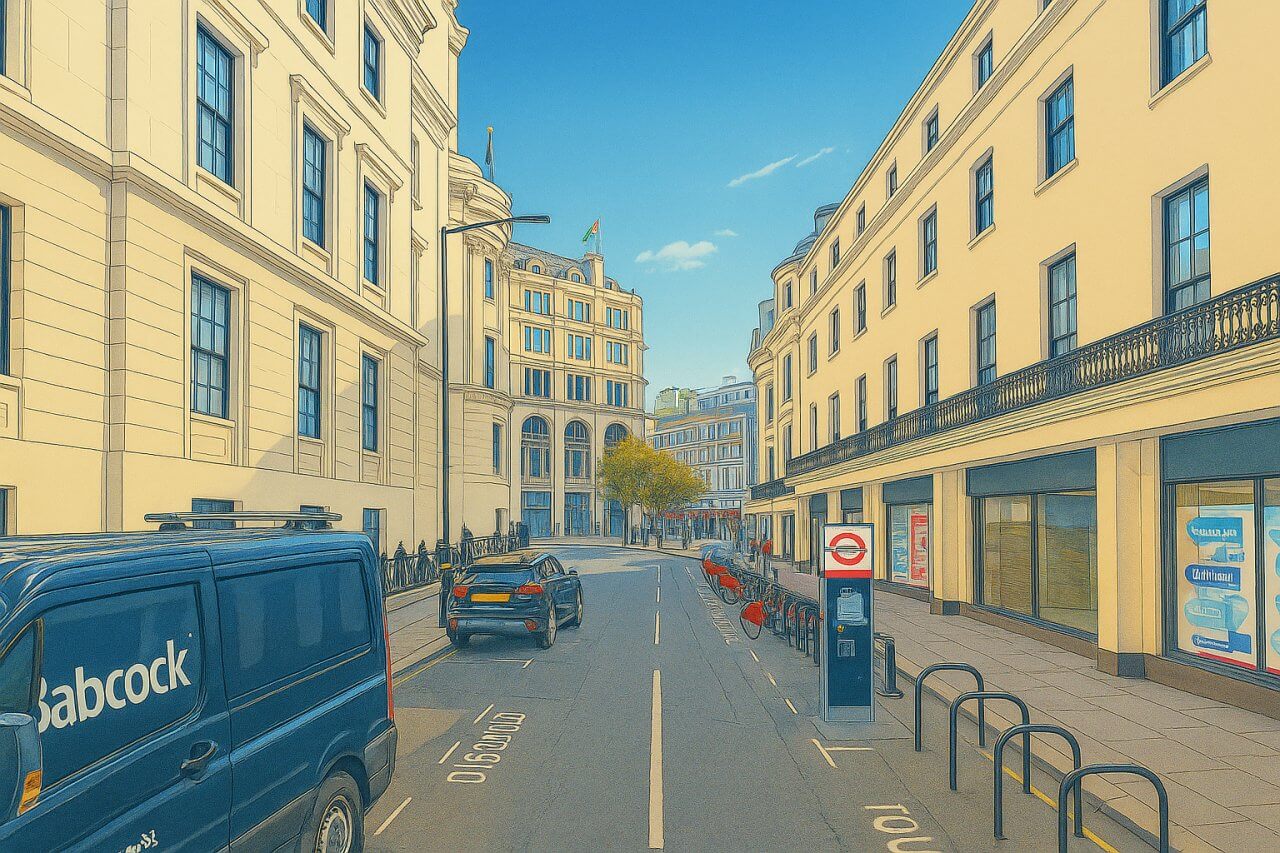
William IV Street, London
William IV Street is a short but historically significant one-way street located in the City of Westminster, London. Running eastward from Charing Cross Road to Agar Street, it forms a key part of the bustling West End district. Despite its modest length, the street is rich in historical context and is surrounded by some of central London’s most vibrant theatres, eateries, and cultural institutions.
Street Layout and Surroundings
William IV Street begins at the junction with Charing Cross Road, just steps away from Charing Cross Station, and extends eastward until it meets Agar Street. It is a one-way road, primarily used by eastbound traffic. To the north lies St Martin's Place and Leicester Square, while to the south you’ll find the Strand and Embankment areas.
The street is characterised by a mixture of commercial buildings and some upper-level residential properties. Architecturally, the structures on William IV Street exhibit a mid-19th-century aesthetic, with many buildings retaining original facades and sash windows. Today, it is lined with offices, restaurants, pubs, and small shops, giving it a lively urban feel without the overwhelming crowds of neighbouring thoroughfares.
Streets connected to William IV Street
History and Development
William IV Street was created in the early 1830s during a period of significant urban redevelopment in central London. It was formed as part of an initiative to improve traffic flow and pedestrian access in the Charing Cross area. The street takes its name from King William IV, who reigned from 1830 to 1837 and was often known as the “Sailor King” for his long service in the Royal Navy.
The street's development was closely linked to the transformation of Charing Cross into a major transport hub and civic centre. During the Victorian era, the area around William IV Street grew in prominence due to its proximity to new theatres, clubs, and improved public infrastructure.
Attractions and Points of Interest
Though compact, William IV Street offers quick access to many of London’s cultural and historical highlights:
- Theatreland: Just north of the street is the heart of the West End theatre district, with the Garrick and Noël Coward Theatres nearby.
- National Portrait Gallery: A short walk away on St Martin’s Place, home to famous portraits of British historical figures.
- St Martin-in-the-Fields Church: A historic church at the northeastern corner of Trafalgar Square, known for classical music concerts and social outreach.
- Charing Cross Station: With shops and direct rail connections to the south of England.
Real Estate and Living
As of early 2025, property prices around William IV Street remain high, in line with central London averages. Residential flats in the area are usually compact, often ranging from 500 to 1,000 square feet (46 to 93 sq metres), housed above commercial premises.
- Sale prices: Approximately £1.2 million to £2.5 million depending on size, amenities, and building condition.
- Rental prices: Around £3,000 to £6,000 per month, depending on flat size and furnishings.
Living on William IV Street offers excellent access to dining, transport, and cultural events, making it highly desirable for professionals, international tenants, and those working in entertainment or finance.
Transport Links
London Underground
The street is within easy walking distance of several key London Underground stations:
- Charing Cross Station (Bakerloo and Northern lines)
- Leicester Square Station (Northern and Piccadilly lines)
- Piccadilly Circus Station (Bakerloo and Piccadilly lines)
These stations offer quick access to the London Underground Stations network, making commuting or sightseeing convenient from William IV Street.
Bus Stops
Numerous bus routes serve the nearby Strand, Charing Cross Road, and Trafalgar Square. Bus stops on the Strand offer services to destinations such as Oxford Street, Waterloo, and Aldwych. These bus routes operate frequently throughout the day and night, making the area well-connected even during off-peak hours.
Fun Fact
William IV Street is often overlooked by tourists, but it once hosted a small theatre known as the Charing Cross Theatre (originally the New Players Theatre), located under the arches near Villiers Street, which continues to operate to this day with a varied programme of plays and cabaret-style shows.
Quick Facts
- Street Name: William IV Street
- Location: City of Westminster, London
- Direction: One-way street from Charing Cross Road to Agar Street (west to east)
- Named After: King William IV (reigned 1830–1837)
- Nearby Attractions: Garrick Theatre, National Portrait Gallery, St Martin-in-the-Fields, Trafalgar Square
- Nearest Underground Stations: Charing Cross (Bakerloo, Northern), Leicester Square (Northern, Piccadilly), Piccadilly Circus (Bakerloo, Piccadilly)
- Nearby Bus Routes: Strand and Charing Cross Road bus stops with frequent service
- Real Estate (2025): Flats range from 500–1,000 sq ft (46–93 sq m); sale prices £1.2M–£2.5M, rents £3,000–£6,000/month
- Fun Fact: Home to Charing Cross Theatre, tucked away under the railway arches
Map of William IV Street, London
 Painting of William IV Street, London
Painting of William IV Street, London